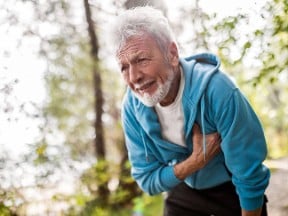COVID-19 is a new virus, and we are still learning new information about how it behaves through case investigations and contact tracing. Although we were in a completely unprecedented situation at the beginning of the outbreak in March, we have learned a lot about the virus and how it spreads over the last seven months. Here’s the latest information about how COVID-19 is transferred and what precautions you can take to avoid it.
Surface Transmission
It was previously believed that surface transmission was the leading cause of the COVID-19 spread. In late May, the CDC updated its site to say that while it is possible to contract the virus this way, it is less likely than we previously believed. While the initial studies for this showed how long COVID-19 could survive on surfaces, it was later confirmed that they used much higher concentrations of the virus than what would typically be found out in the real world.
The only real-world scenario that would be comparable to this level of concentration is if an infected person were to cough or sneeze directly on the surface or inanimate object. This is by no means impossible, so you should continue washing your hands or using hand sanitizer throughout the day. However, there are other kinds of transmission of which you should be more cautious.
Person-To-Person Transmission
"According to the CDC, most cases of COVID-19 spread through close contact, via contact transmission or droplet transmission," says Dr. Thinh Xuan Ho, family medicine physician at Baylor St. Luke’s Medical Group in Tomball.
In the case of contact transmission, there is a risk of contracting the virus by physical contact such as a handshake. Avoiding this kind of contact with people, especially those not in your household, is a good idea.
Droplet transmission refers to the droplets exhaled by an infected person. The CDC still states that COVID-19 is primarily spread through these droplets, which can be exhaled when someone speaks, sneezes, or coughs. If you are standing close to someone infected with COVID-19, you risk coming into contact with those droplets. This remains the primary reason for physical distancing and masks, which are still great precautions to take when leaving your home during this pandemic.
Airborne Transmission
Airborne transmission refers to infection from respiratory droplets smaller than ones involved in direct person-to-person transmission. These droplets and particles, or aerosols, are small enough to remain suspended in the air over long distances (greater than 6 feet) and time.
Though it is not entirely impossible for COVID-19 to spread this way, the CDC maintains that it is not the most likely way for it to be transferred, and person-to-person transmission is still the most common way.
"There is very little to no evidence that COVID-19 spreads through airborne transmission — meaning further than 6 feet or hours after the presence of an infected person," explains Dr. Ho. "Given that, main interventions include social distancing, use of masks, hand hygiene, surface cleaning and disinfection, adequate ventilation, and avoidance of crowded or closed spaces."
There are a few conditions that would make airborne transmission possible, however. The first is enclosed spaces, in which people could be exposed either during or shortly after an infected person is present. The second is prolonged exposure to respiratory particles and an increased concentration of those particles, usually caused by exertion such as singing, shouting, or exercising. The third is inadequate ventilation or air handling, allowing those suspended particles to build up.
Find more information about how you can take care of yourself and your loved ones during the pandemic on our COVID-19 Information Hub. Need a quick symptom evaluation? Schedule a virtual visit with a Baylor St. Luke’s Medical Group primary care physician.
Sources:
CDC | Scientific Brief: SARS-CoV-2 and Potential Airborne Transmission
The Wall Street Journal | Key to Preventing Covid-19 Indoors: Ventilation
The Washington Post | CDC reverses itself and says guidelines it posted on coronavirus airborne transmission were wrong
Medium | The Most Likely Way You’ll Get Infected With Covid-19




